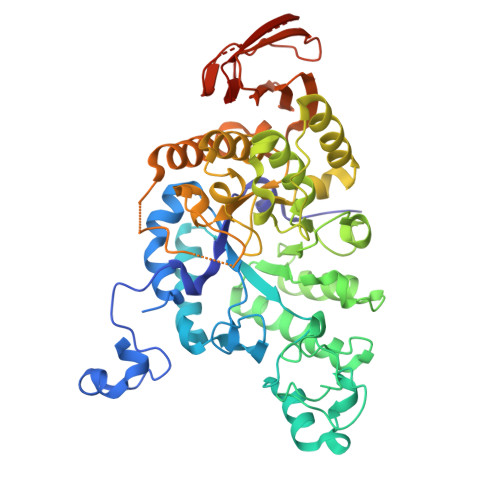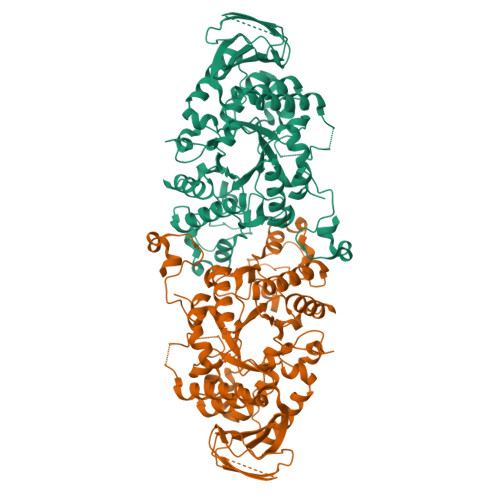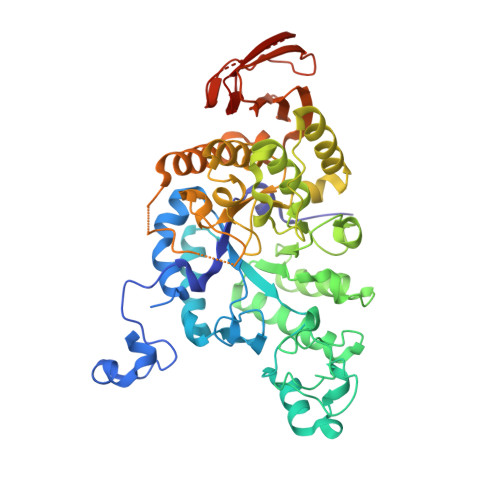Structural Features of the Nostoc Punctiforme Debranching Enzyme Reveal the Basis of its Mechanism and Substrate Specificity.
Dumbrepatil, A.-B., Choi, J.-H., Park, J.T., Kim, M.J., Kim, T.J., Woo, E.-J., Park, K.-H.(2010) Proteins 78: 348
- PubMed: 19768689
- DOI: https://doi.org/10.1002/prot.22548
- Primary Citation of Related Structures:
2WC7, 2WCS, 2WKG - PubMed Abstract:
The debranching enzyme Nostoc punctiforme debranching enzyme (NPDE) from the cyanobacterium Nostoc punctiforme (PCC73102) hydrolyzes the alpha-1,6 glycosidic linkages of malto-oligosaccharides. Despite its high homology to cyclodextrin/pullulan (CD/PUL)-hydrolyzing enzymes from glycosyl hydrolase 13 family (GH-13), NPDE exhibits a unique catalytic preference for longer malto-oligosaccharides (>G8), performing hydrolysis without the transgylcosylation or CD-hydrolyzing activities of other GH-13 enzymes. To investigate the molecular basis for the property of NPDE, we determined the structure of NPDE at 2.37-A resolution. NPDE lacks the typical N-terminal domain of other CD/PUL-hydrolyzing enzymes and forms an elongated dimer in a head-to-head configuration. The unique orientation of residues 25-55 in NPDE yields an extended substrate binding groove from the catalytic center to the dimeric interface. The substrate binding groove with a lengthy cavity beyond the -1 subsite exhibits a suitable architecture for binding longer malto-oligosaccharides (>G8). These structural results may provide a molecular basis for the substrate specificity and catalytic function of this cyanobacterial enzyme, distinguishing it from the classical neopullulanases and CD/PUL-hydrolyzing enzymes.
Organizational Affiliation:
Department of Food Science and Technology, Chungbuk National University, Chungju, 361-763, Korea.


















